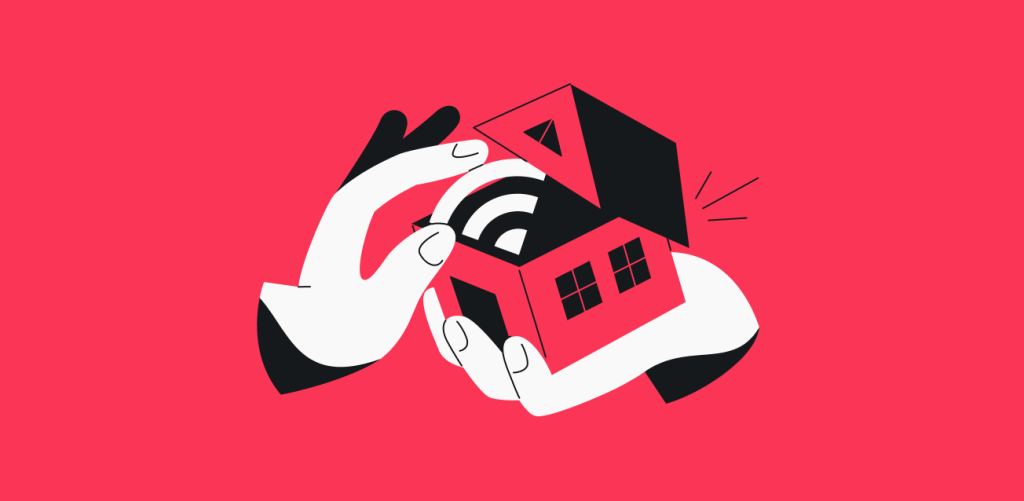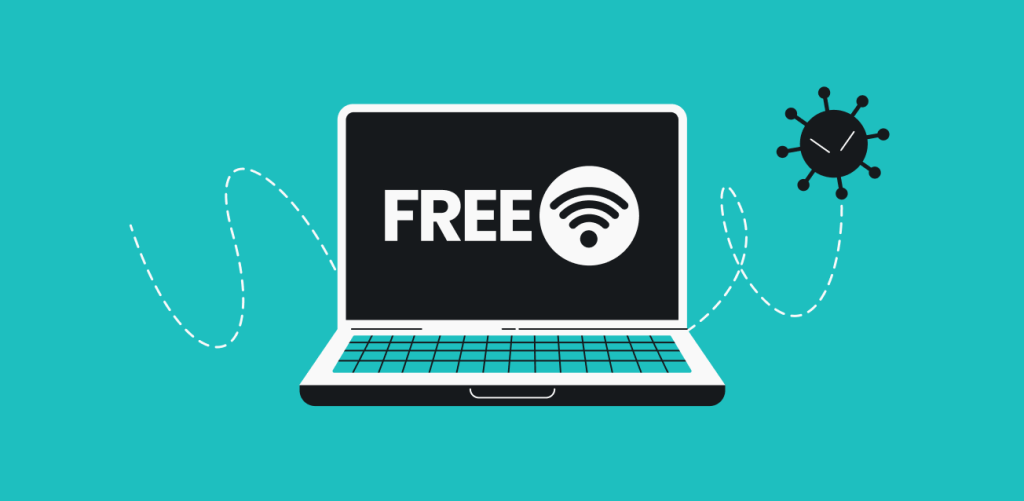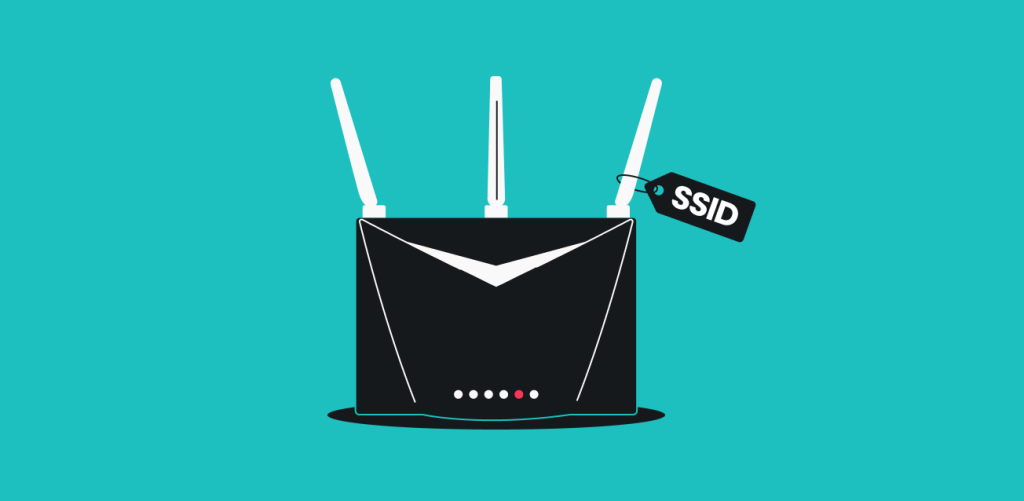
Say your Wi-Fi speed is always slow, even when you’re the only one using it — have you ever wondered why that happens? Well, your neighbor could be stealing your Wi-Fi, and it’s time you protect it.
But to keep it real, it’s not just a matter of Wi-Fi speed. Because who knows what your neighbors are doing on the internet with your Wi-Fi? If they are using your IP for malicious or illegal activities, then it could cause serious trouble for you.
So, let’s explore how to protect Wi-Fi from neighbors or unauthorized access.
Table of contents
How to know who’s using your Wi-Fi
Before you start thinking about protecting your Wi-Fi, you must know who is using it. There are a couple of ways to find this out, but we’ve listed some of the most convenient options for you. So here’s how to see who is using your Wi-Fi:
Check router settings
- Log in to your router’s admin page by typing the router’s IP (Internet Protocol) address into a web browser.
- Enter the admin username and password (default credentials are usually set to username as “admin” and password also as “admin”).
- Look for a list of connected devices under the title Device List or Attached Devices.
- If the number is higher than the number of household devices currently connected to the internet, there are Wi-Fi stealers around you.
Learn more about how to identify if your router has been hacked.
Use network monitoring apps
Third-party applications like Datadog, Zabbix, and SolarWinds provide an easy-to-read list of devices connected to your network. You can use these apps to identify unknown connected devices and stop neighbors from using your wireless internet.
In addition, these apps also provide alerts for new connections to spot unauthorized devices as soon as someone connects.
Router LED indicators
Routers have LED indicators that show network activity. The blinking light represents data being sent and received over your network. If you notice a continuously blinking light even when no known devices are using the internet, someone unauthorized might be using your Wi-Fi.
Ways to protect your Wi-Fi
Now, if you’re wondering how to stop someone from using your Wi-Fi connection, follow these steps and secure your Wi-Fi:
Use a strong password
If you’re curious whether a neighbor can mess with your Wi-Fi, the answer is yes. But only if you have an easy-to-guess password or no password at all. So, the best way to protect your Wi-Fi is to have a strong password to secure your internet connection.
That’s why you should create a password that combines uppercase and lowercase letters, numbers, and special characters. This will ensure that your password is not easily guessable — for example, your name, age, or birthday.
Note: Change your Wi-Fi password periodically to keep your network security tight.
Enable WPA3 or WPA2 encryption
WPA2 is a security protocol that uses AES (Advanced Encryption Standard) encryption to ensure that data transmitted over the network is encrypted and protected from interception. It requires a pre-shared key (PSK) to maintain a secure connection between a device and a wireless access point.
The PSK is a shared secret key known to the wireless access point (AP) and the client device. You can set it up during the network’s initial configuration. Then, whenever a device attempts to connect to your network, it will have to provide the correct PSK. This encryption makes it extremely difficult for attackers to intercept and decipher the data.
In addition to this, WPA3 is another security protocol that provides better security features over WPA2. It uses SAE (Simultaneous Authentication of Equals) to protect against brute-force attacks. Instead of relying on a pre-shared key alone, SAE requires the device and the router to generate unique keys each time they connect. This way, even if someone tries to guess the password repeatedly, they won’t be able to crack it easily.
However, if your router doesn’t support WPA3, WPA2 is still a strong option.
Change the default SSID and password
You can also restrict internet access from neighbors’ by changing the default SSID (Service Set Identifier) to something unique that isn’t personally identifiable. Doing so makes it harder for attackers to guess the type of router you’re using.
You can also hide your SSID to add an extra layer of obscurity to your network. Here’s how:
- Go to the web, type your router’s IP address, and press Enter.
- Enter the router’s admin username and password.
- If you have forgotten the credentials, reset your router to factory settings using the button on the router.
- Once logged in, look for the wireless settings section — mostly labeled Wireless, Wi-Fi Settings, or Wireless Setup.
- Look for an option related to SSID broadcast, which can be labeled SSID Broadcast, Visibility Status, Broadcast SSID, or Enable SSID Broadcast.
- Uncheck the box or select the option to disable SSID broadcast.
- Now, save and apply changes.
And that’s it — your SSID is hidden.
Update the router’s firmware
Manufacturers often release updates to patch security vulnerabilities, but users are unaware of them. So, make sure to check your router’s admin page for firmware updates and apply them as needed.
This will ensure that your router has the latest security features.
Use a VPN
In addition to the protection methods mentioned above, you can use a Wi-Fi VPN like Surfshark. Surfshark VPN encrypts all data transmitted over your Wi-Fi network by masking your actual IP and replacing it with one from the VPN server. This converts your data into a secure format that can only be read by the intended recipient.
That’s how Surfshark makes it difficult for anyone to track your online activities or identify your devices. It also protects your network from man-in-the-middle (MITM) attacks, which can occur when attackers intercept communication between your device and the internet.
Now that you know how a Wi-Fi VPN can help you let’s see how to reduce Wi-Fi interference from neighbors using Surfshark VPN:
- Download the Surfshark app on your device or add a browser extension.
- Open its website or app and log in/sign up using your email password.
- Choose a VPN server to connect to. Surfshark will automatically select the best server for optimal performance.
- Turn on the VPN connection to start encrypting your data.
Note: Activate Surfshark Alert to monitor your email and passwords for leaks and receive immediate notifications if your data is compromised.
What do you do if your neighbor already has access to your Wi-Fi?
Some people want to use free Wi-Fi anywhere they go. While it can be done legally, neighbors can illegally intercept your IP for free internet, too. To prevent this, I have prepared an action plan for you to follow if your neighbor has access to your Wi-Fi network:
- Identify unauthorized devices: find the list of connected devices and identify those that have unknown MAC (Media Access Control) addresses;
- Block unauthorized devices: add the MAC addresses of your authorized devices to the router’s MAC address and filter the list to restrict network access to your devices only;
- Monitor your network: use monitoring tools to see how your actions are working and if any unknown devices are connected to your Wi-Fi;
- Create a guest profile: in an emergency, sharing your Wi-Fi with your neighbors is okay. However, make sure to set up a separate guest network profile for visitors. This way, they won’t be able to access your main network;
- Change router password: after you’ve done everything, log in to your router’s admin interface and change the Wi-Fi password to strengthen your credentials.
Secure your Wi-Fi with Surfshark VPN
Now, you know how to tell if your neighbor is stealing your internet. Remember that letting unknown people use your Wi-Fi can be very dangerous, as your IP might get into the wrong hands.
Surfshark understands this threat, so we provide an encrypted solution — a VPN — to protect your privacy on the web. It is easy to install, affordable, and provides extra peace of mind.
FAQs
Can neighbors connect to my Wi-Fi without a password?
Yes, neighbors can connect without a password if your Wi-Fi network is open or unsecured.
Can my neighbors piggyback on my Wi-Fi?
Yes, if they have your Wi-Fi password or your network is not secured, they can piggyback on your Wi-Fi.
Can I make my Wi-Fi private?
Yes, you can make your Wi-Fi private by setting a strong password, hiding your SSID, or using WPA2 or WPA3 encryption.
How do I block Wi-Fi signals from neighbors?
You cannot block your Wi-Fi signals from neighbors, but you can secure your network using strong passwords. And you can also disable WPS and set up a visitor guest network.



